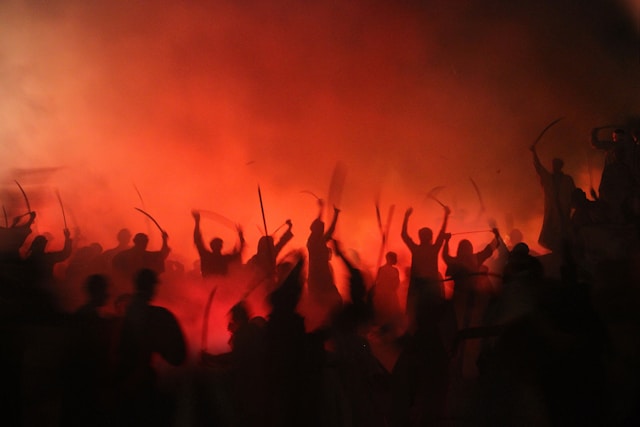A visual history of male gay rights through photojournalism - The Lens of History

Photojournalism is an impactful form of journalism that tells a story using merely images. Throughout history, photojournalism has been there to shed a real (and visual) light on important matters, sometimes even documenting what mainstream media were trying to hide. When it comes to LGBTQ+ rights movements, photojournalism has also played an important role in giving it a voice and showing what was happening to the world. They say that an image is worth a thousand words, and we could agree that this is the premise of photojournalism.
The stonewall uprising & the spark of the movement
In the early hours of June 28, 1969, the police of New York City raided the Stonewall Inn, as was routine in those times. But they met with unexpected resistance, thus becoming a key moment in LGBTQ+ history. Photojournalists rushed to the scene to capture the aftermath of smashed glass and crowd forming in defiance. Although few images from that night exist, the ones that do, are a powerful testament to the beginning of the modern gay rights movement.
While most of the photographs from the Stonewall uprising feature male participants, particularly Latino gay men, the most famous pictures from that night are those of trans women of color Marsha P. Johnson and Sylvia Rivera, who were key figures in the uprising. Since then, they’ve become a symbol of gay and trans rights. They represent some of the most marginalized members of the community, yet their visibility and importance in the photographic archives is paramount.
Visibility and the AIDS crisis
A few years later, there was a shadow that marked the 1980s. The AIDS epidemic ravaged the gay community and once again, photography and photojournalists were there to tell us the story of what was going on, although not everybody was willing to listen. In fact, most mainstream media turned a blind eye to the human toll, so it was only independent photographers and LGBTQ+ publications that gave a voice to the crisis, showing images that reflected the truth.
There’s an iconic photo from this period, captured by photographer William Lucas that shows a man cradling his partner, who’s dying of AIDS in a San Francisco hospital bed. The intimacy of the shot caused all kinds of reactions, from outrage to empathy, and that is the power of photography and photojournalism. Later, photographers documented the demonstrations of ACT UP (AIDS Coalition to Unleash Power), immortalizing impactful images for years to come.
Male Gay Pride in the frame
The first official Price march was held in New York City in 1970, exactly one year after Stonewall. Early Gay Pride events primarily represented gay males, more specifically white gay men. This happened because gay men were the most vocal group at the beginning, but that of course changed over time. Even so, trans women, drag queens, lesbians, and people of color also played a part in the early LGBTQ+ rights movements. It’s just that they were usually underrepresented in media coverage.
Eventually, Pride has become much more inclusive, as well as a global phenomenon, and thanks to photojournalism we can see the progression from solemn protests to radiant celebrations. Images from the first Pride events show a modest crowd, with handmade rainbow flags, while more recently we can see huge masses of people with elaborate costumes and even corporate sponsorships. Each photograph also reflects the social and political situation of the moment in which they were taken.
The importance of representation
Unfortunately, there are still many countries where being gay is not accepted or even criminalized, but even in those places, photojournalists do their thing, often risking their own safety. The result are images documenting Pride events or gatherings that take place in secret, and they’re of utmost importance because they help normalize queer lives and assert their right to exist and live their lives on their own terms.
Even images of two gay dads playing with their kid in a park, or a lesbian couple holding hands humanize LGBTQ+ identities and break down negative stereotypes.
Nowadays, it’s queer individuals and photographers who are taking over and capturing their own stories, therefore making photojournalism more inclusive. By documenting their reality, they are inevitably shaping it, which is still much needed.